
There are two kinds of gardeners when it comes to self-sowing perennials: Lady Plant Hoarder, who says “Bring it on!,” and Mr. Garden Curmudgeon, who simply doesn’t understand why anyone would set themselves up for the work of managing all those lusty, willing plant volunteers. As a maximalist, I believe more is more and, therefore, encourage my plants to go for it. Free plants are free plants, after all.
I first became interested in these happy runaways when I had a very large space to fill and very little money to fill it with. The designer in me liked the idea of not only filling a large space inexpensively but also having large swaths of color. But in my big garden experiment, I started off with some thuggy self-sowers and ended up pulling out plants like common valerian (Valeriana officinalis, USDA Hardiness Zones 4–9) over and over again for many years. It was garden purgatory.
I’ve since fine-tuned my list of favorite self-sowers to those that not only look gorgeous but also play nicely with others. As these plants have seeded themselves around my garden, they’ve created combos that I would never have thought of myself. I think that this group of ten has enough style and charm to justify having more than one—or even more than six—of each!
Blackberry lily keeps the show going into fall
Name: Belamcanda chinensis
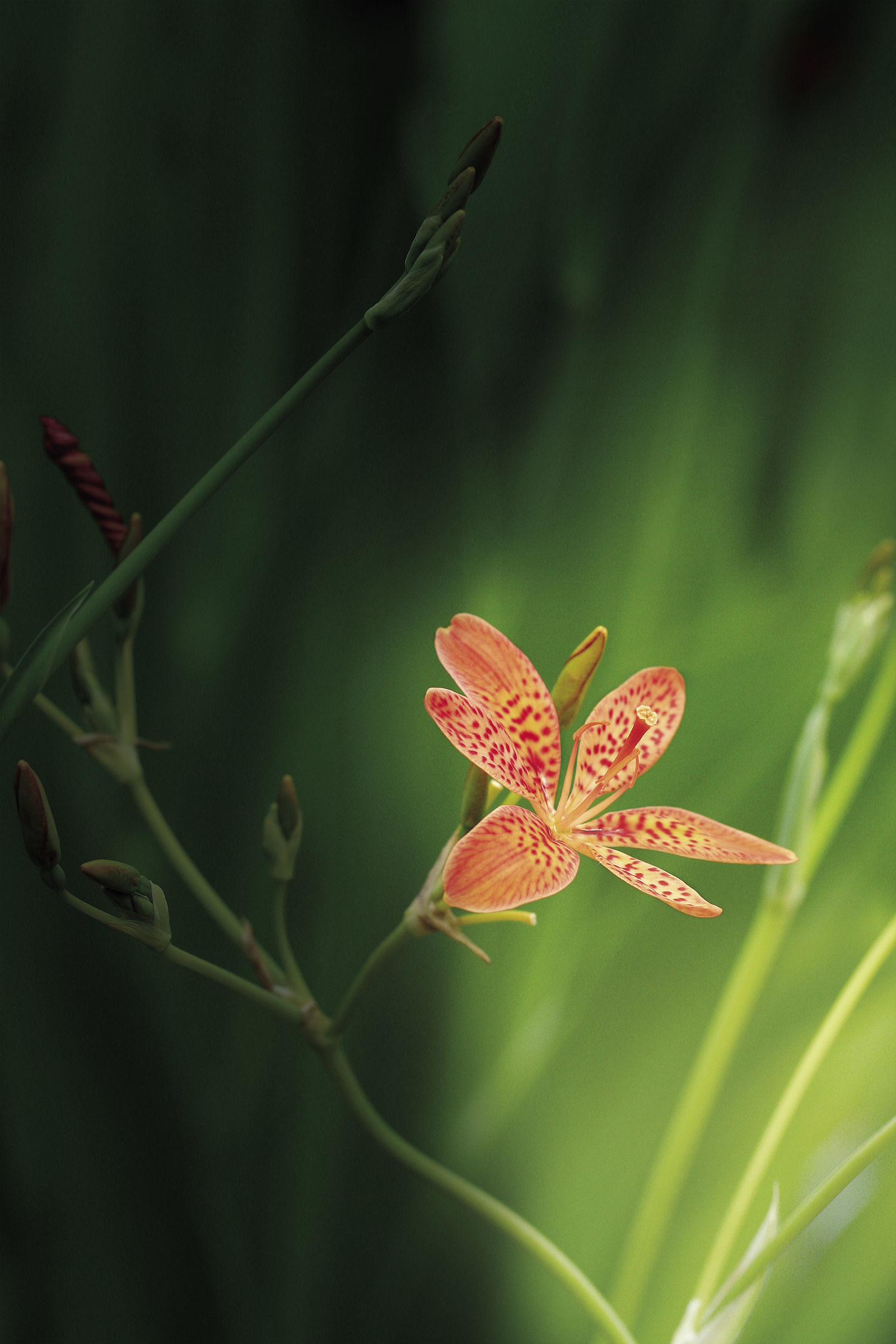
| I cannot see this plant in bloom without singing its common name to the tune of Santana’s “Black Magic Woman.” Blackberry lily has strappy, irislike foliage and exotic leopard-spotted orange flowers that bloom in late summer. As a bonus, its clusters of shiny black seeds give you something nice to look at in winter. Blackberry lily’s seedlings look just like their parents but a whole lot smaller. If you pair it with ‘Isla Gold’ tansy (Tanacetum vulgare ‘Isla Gold’, Zones 4–8), the temperature in your garden will raise by several degrees.
Zones: 5–9 Size: Up to 3 feet tall and 1 foot wide Conditions: Full sun; average, well-drained soil |
 |
‘Lodden Royalist’ blue bugloss replaces itself
Name: Anchusa azurea ‘Lodden Royalist’
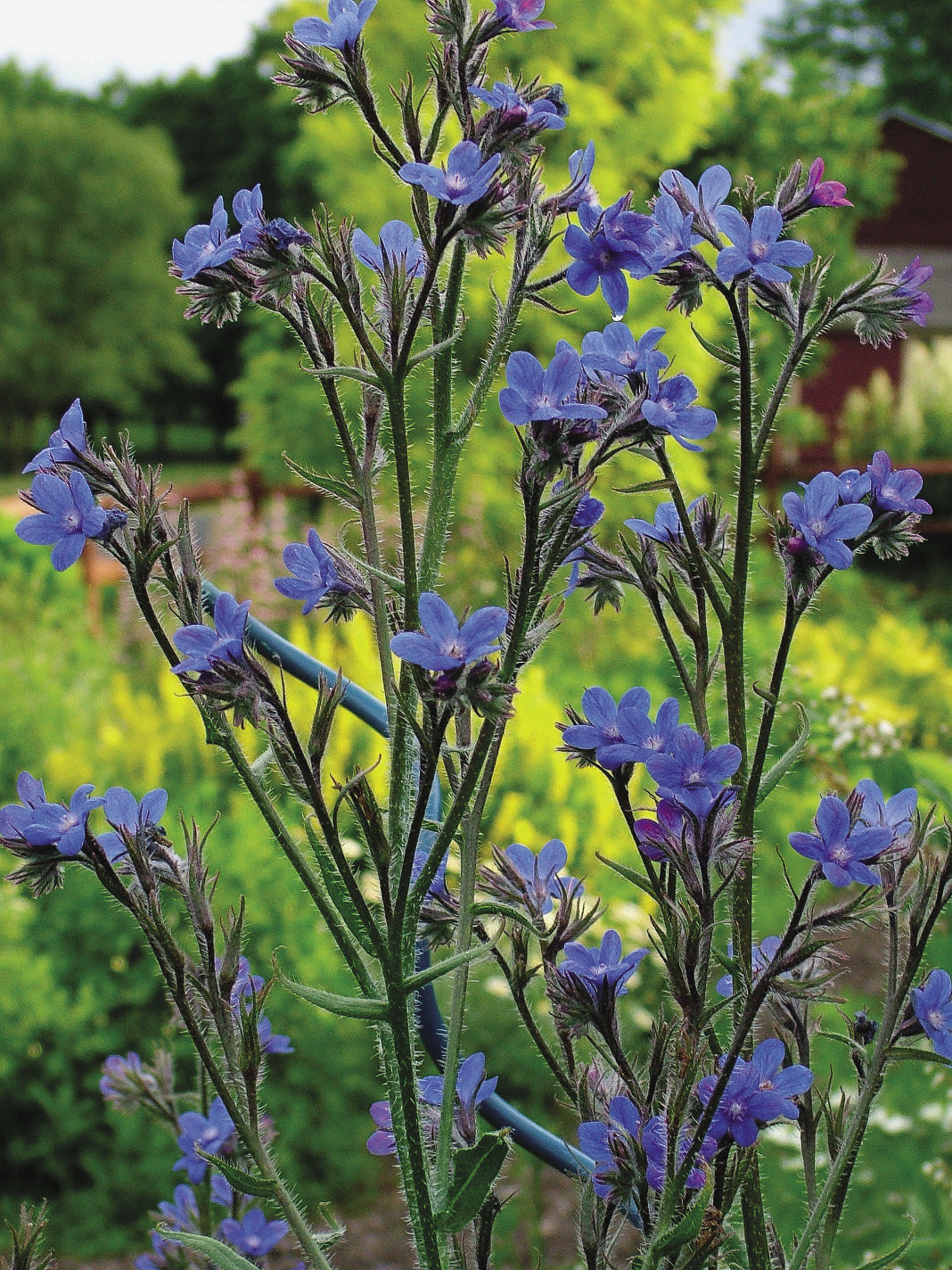
| A good blue is hard to find. There are, luckily, a few that are dependable self-sowers. ‘Lodden Royalist’ blue bugloss is known for being short-lived, but if you find the right place for it—where it’s happy enough to seed itself reliably—you’ll hardly notice because new plants will take the place of those that disappear. This butterfly-bait plant benefits from a disciplinary haircut from time to time. Whenever it’s looking a little rough around the edges, just mow it down to 1 to 2 inches tall. But make sure you stop cutting it back by the Fourth of July so that you don’t miss out on its late-season flowers and the resulting seeds. This is one of those plants where I almost always pull out the seedlings by mistake because they don’t look like anything special. It’s tricky, so stay focused when thinning.
Zones: 3–8 Size: Up to 3 feet tall and 2 feet wide Conditions: Full sun to partial shade; moist, well-drained soil |
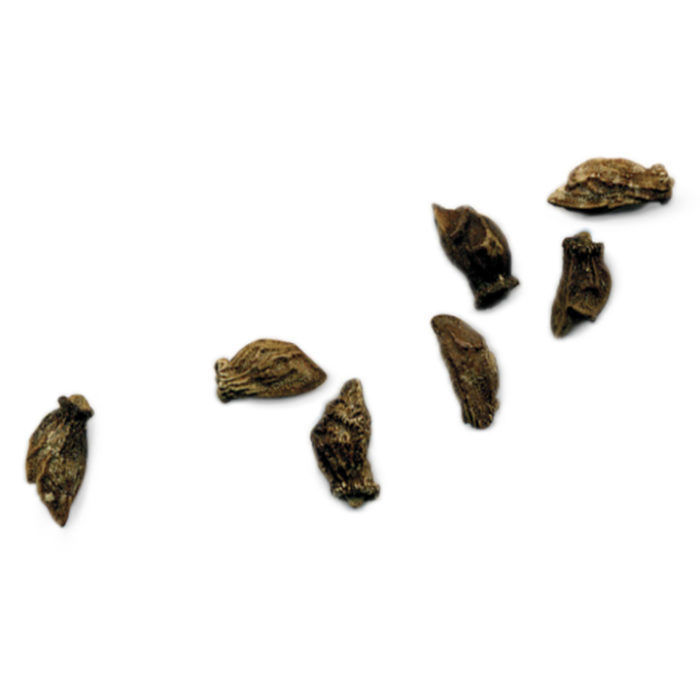 |
Common rue is a treat for the eyes and the nose
Name: Ruta graveolens
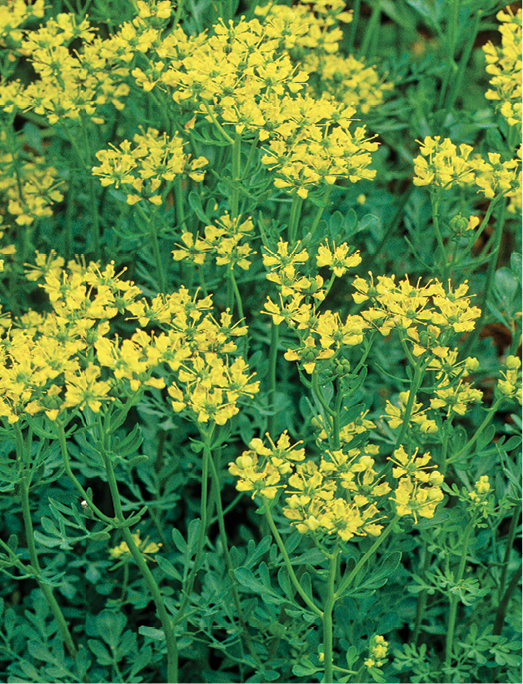
| This herb is so good that it gave its name to the actress Rue McClanahan and a magical mixture of butter and flour used to make gumbo. I love its witchy smell and glaucous, ferny leaves. Its clusters of pale yellow flowers that bloom in midsummer are just a bonus. If you put it next to a variegated iris (Iris pallida ‘Variegata’, Zones 4–9), you’ll swoon from the cuteness. Common rue is a favorite of swallowtail-butterfly larvae, which is a giant plus. A giant minus is that the plant’s sap, when combined with the sun’s rays, can cause rashes and even blisters. Common rue’s offspring are easy to identify by sight and smell, even from an early age—just like baby skunks.
Zones: 5–9 Size: Up to 3 feet tall and wide Conditions: Full sun to partial shade; well-drained soil |
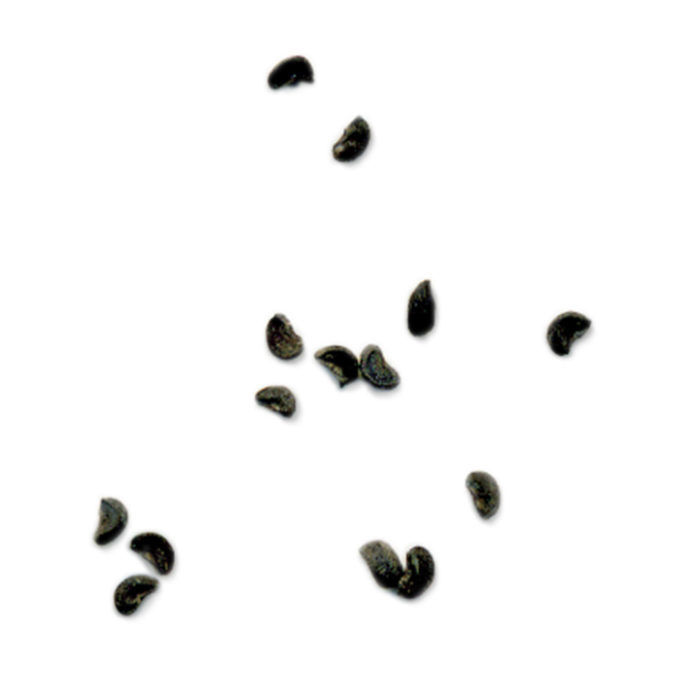 |
Nodding onion has no four-legged friends
Name: Allium cernuum
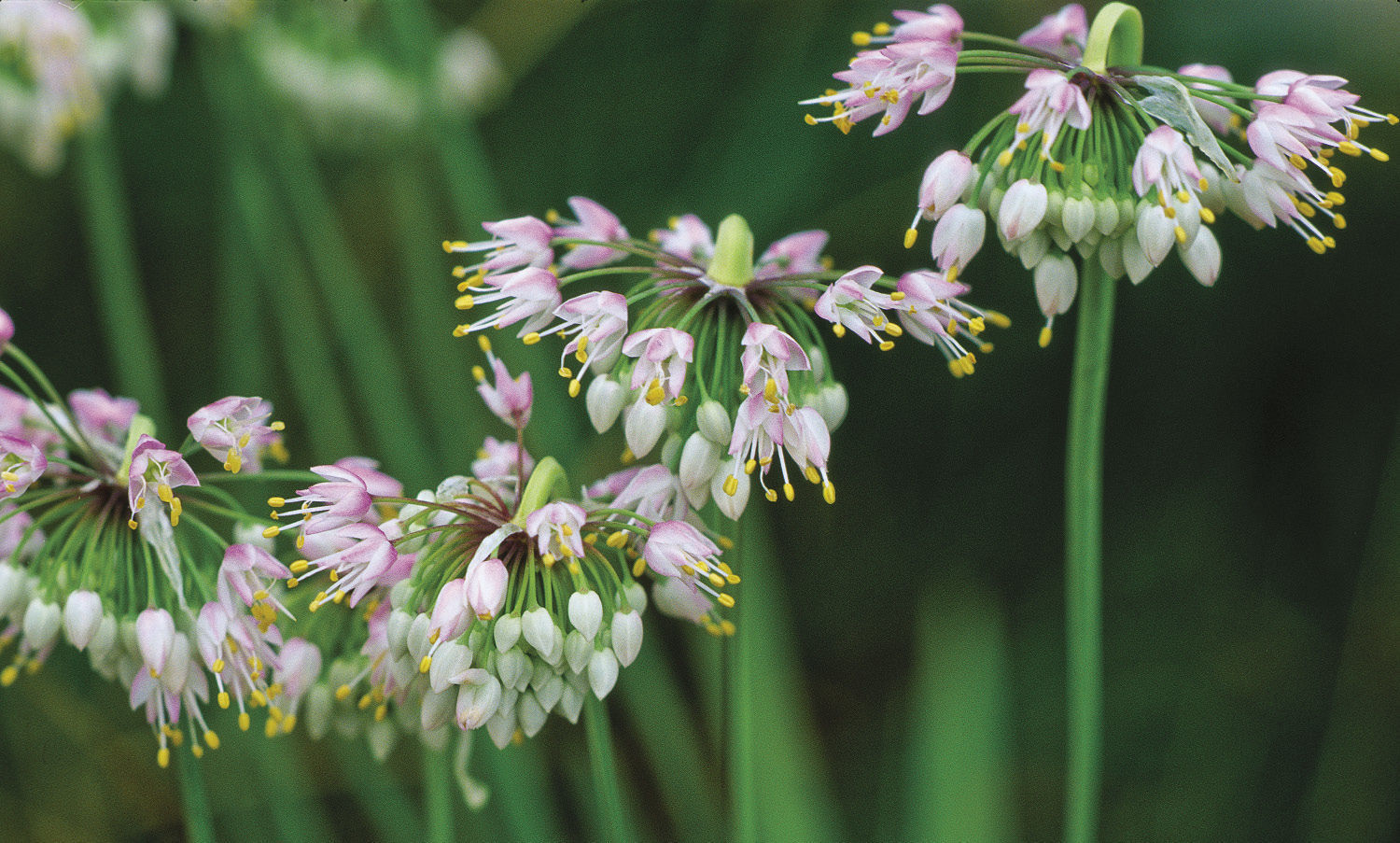
| In my book, if any self-seeder was going to be mandatory, it would be this native onion—and not just because Chicago is named after it (Chegagou is Algonquin for “The Land of Smelly Onions”). The shiny, strappy leaves of nodding onion add a nice texture while you wait for it to bloom in late summer, when its pale pinkish flower clusters nod to you in approval, as if to say, “You did a good job planting me.” As a member of the Allium family, the plant is tastily edible to people but repulsive to deer and rabbits. Its seedlings are easy enough to identify: If you pull something out that smells like onion, you’ve found it. I like planting it with ‘Chocolate’ eupatorium (Eupatorium rugosum ‘Chocolate’, Zones 4–8), which is also a self-sower, or with ‘Alexander’ whorled loosestrife (Lysimachia punctata ‘Alexander’, Zones 4–8).
Zones: 4–8 Size: 12 to 18 inches tall and wide Conditions: Full sun to partial shade; fertile, well-drained soil |
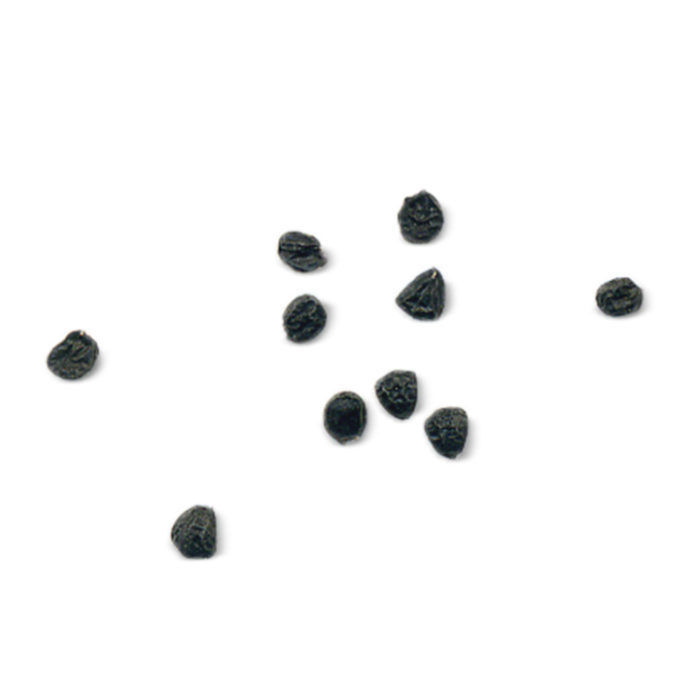 |
Perennial flax makes fluffy mounds of blue
Name: Linum perenne
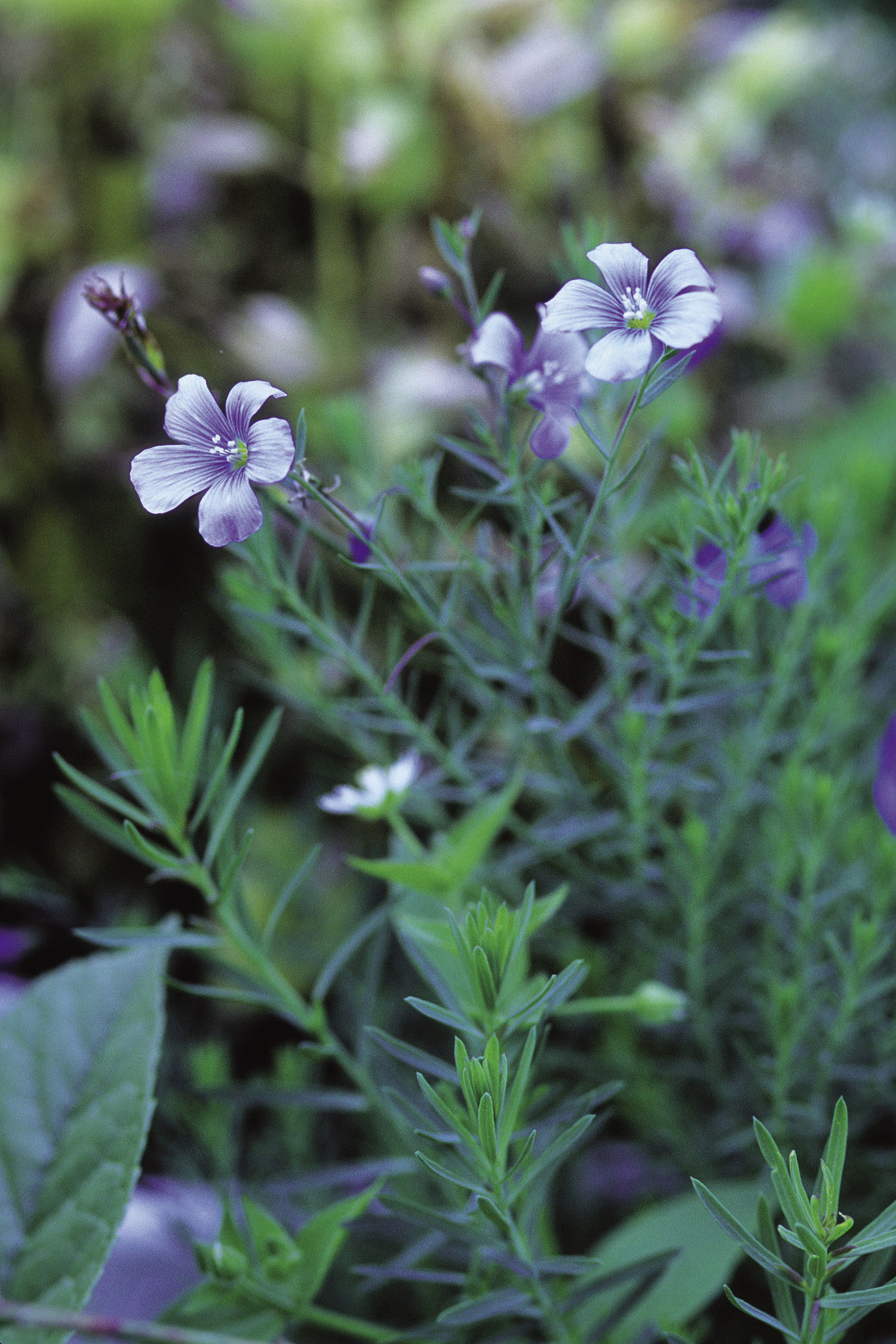
| Perennial flax is a fluffy blue cloud of a plant. Its wiry foliage hosts a bazillion blooms that fall off each and every day. It blooms for a good chunk of the summer when happy. In my garden, I have the plant keeping company with a trio of black mondo grasses (Ophiopogon planiscapus ‘Nigrescens’, Zones 6–11), and the contrast between color and texture makes a strong statement. You could make a comfortable but wrinkly dress out of this plant if you let enough of its seedlings live. Perennial flax is what linen was made from long ago. Its seedlings’ grassy habit and sheer number make them easy to spot.
Zones: 7–9 Size: Up to 18 inches tall and wide Conditions: Full sun; well-drained soil |
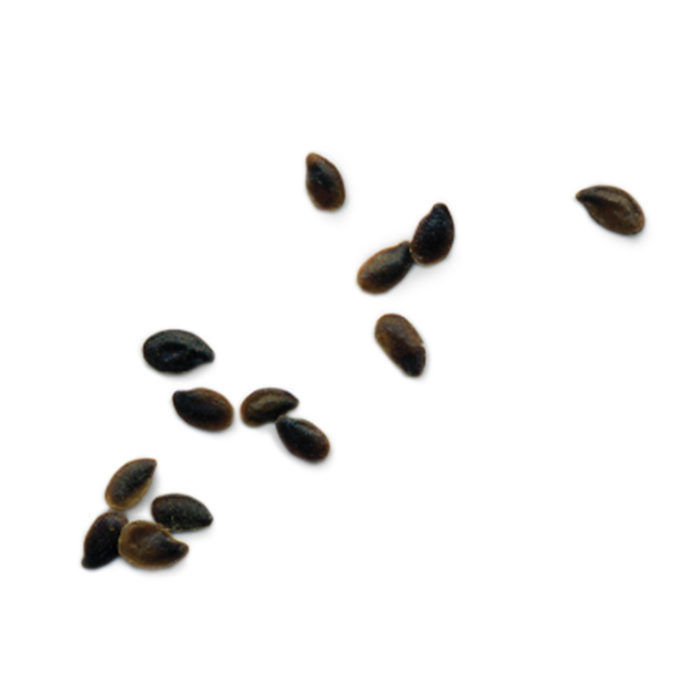 |
Cup plant is a giant for the back of the border
Name: Silphium perfoliatum
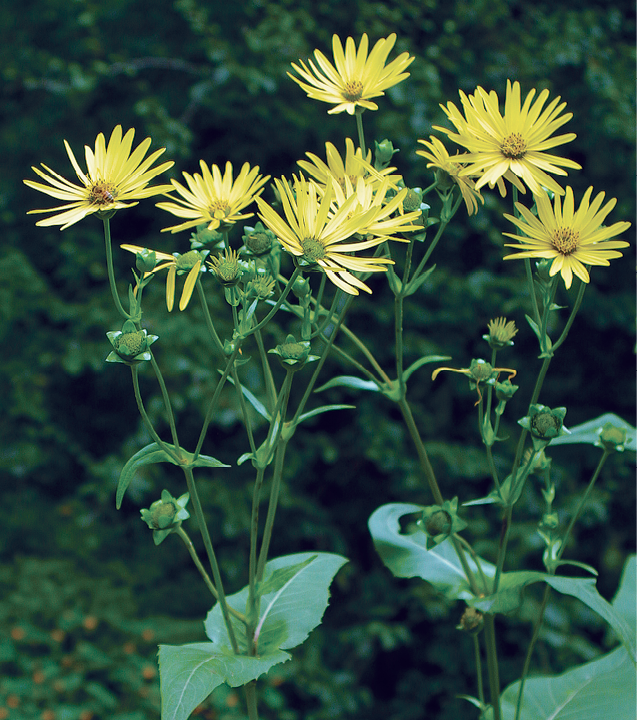
| This prairie native is so gigantic you may want to think carefully before you add it to your garden. Cup plant gets its name from the little cups it makes where the leaves join the stem, making a tiny well on either side to catch just the tiniest bit of water for passing wildlife. I like to run it over with a tractor in late spring to stunt its growth and make it sturdier; this plant is too enormous to just be pinched. In late summer, it blooms sunflower-like gold flowers. It’s a natural with tall ornamental grasses in the back of the border. The seedlings of this plant are easy enough to spot: They are the fastest-growing weeds you’ve got—and, this time, that’s a good thing.
Zones: 5–9 Size: Up to 10 feet tall and 3 feet wide Conditions: Full sun; moist, fertile, well-drained soil |
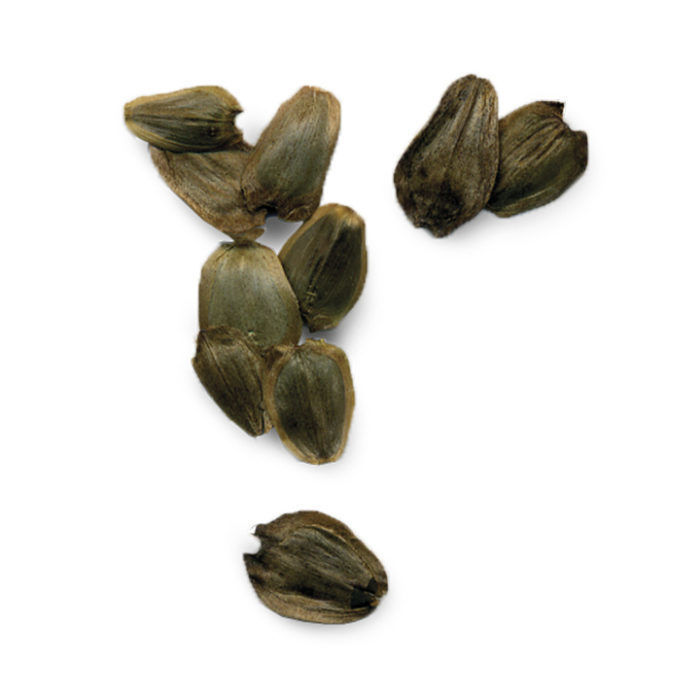 |
Purple Japanese parsley adds drama to the shade
Name: Cryptotaenia japonica f. atropurpurea
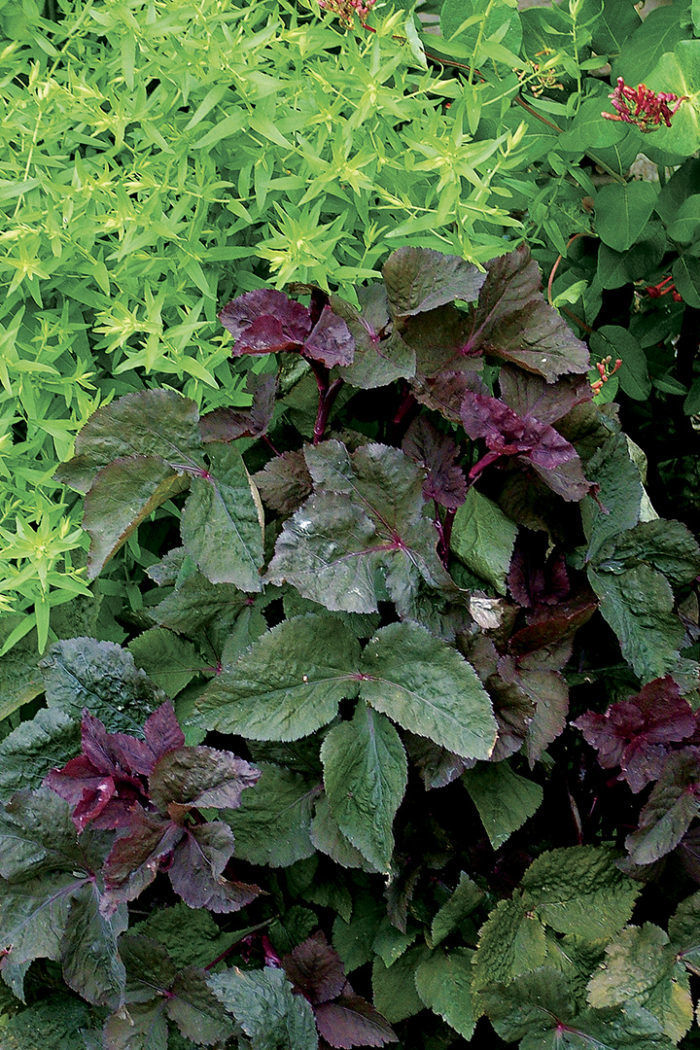
| I like a dark-colored leaf probably more than the next person, so this reseeder is near and dear to my heart. Purple Japanese parsley is great as a ground cover in the shade, where its dramatic foliage has a modern, chic, yet woodland look. Fair warning: Its flowers are really tiny, and when it goes to seed, it’s difficult to see what’s going on in order to deadhead it. Seedlings are easy enough to identify—due to their color—and fairly easy to yank, so don’t fret. I love to see the plant in the cracks of a flagstone patio, growing alongside yellow corydalis (Corydalis lutea, Zones 5–8), another care-free self-sower.
Zones: 4–9 Size: Up to 18 inches tall and 1 foot wide Conditions: Partial to light shade; moist, well-drained soil |
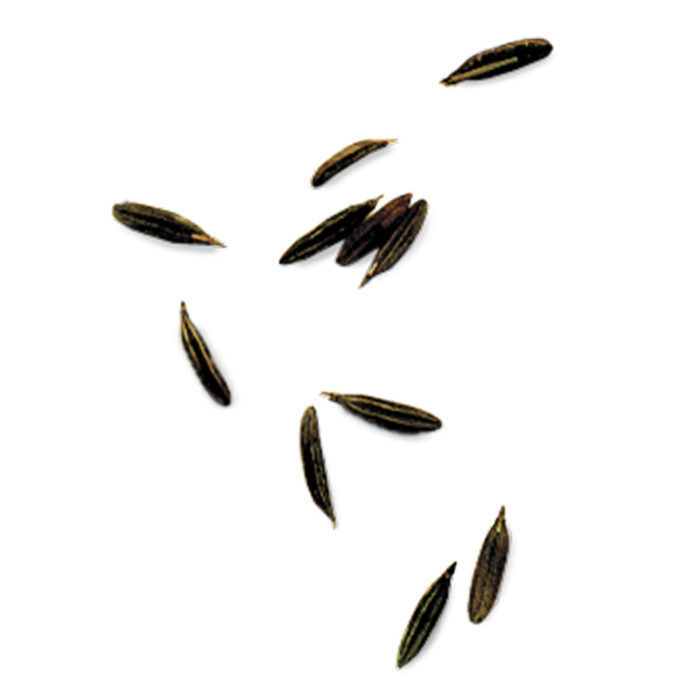 |
Mountain bluet is an old-fashioned staple
Name: Centaurea montana and cvs.
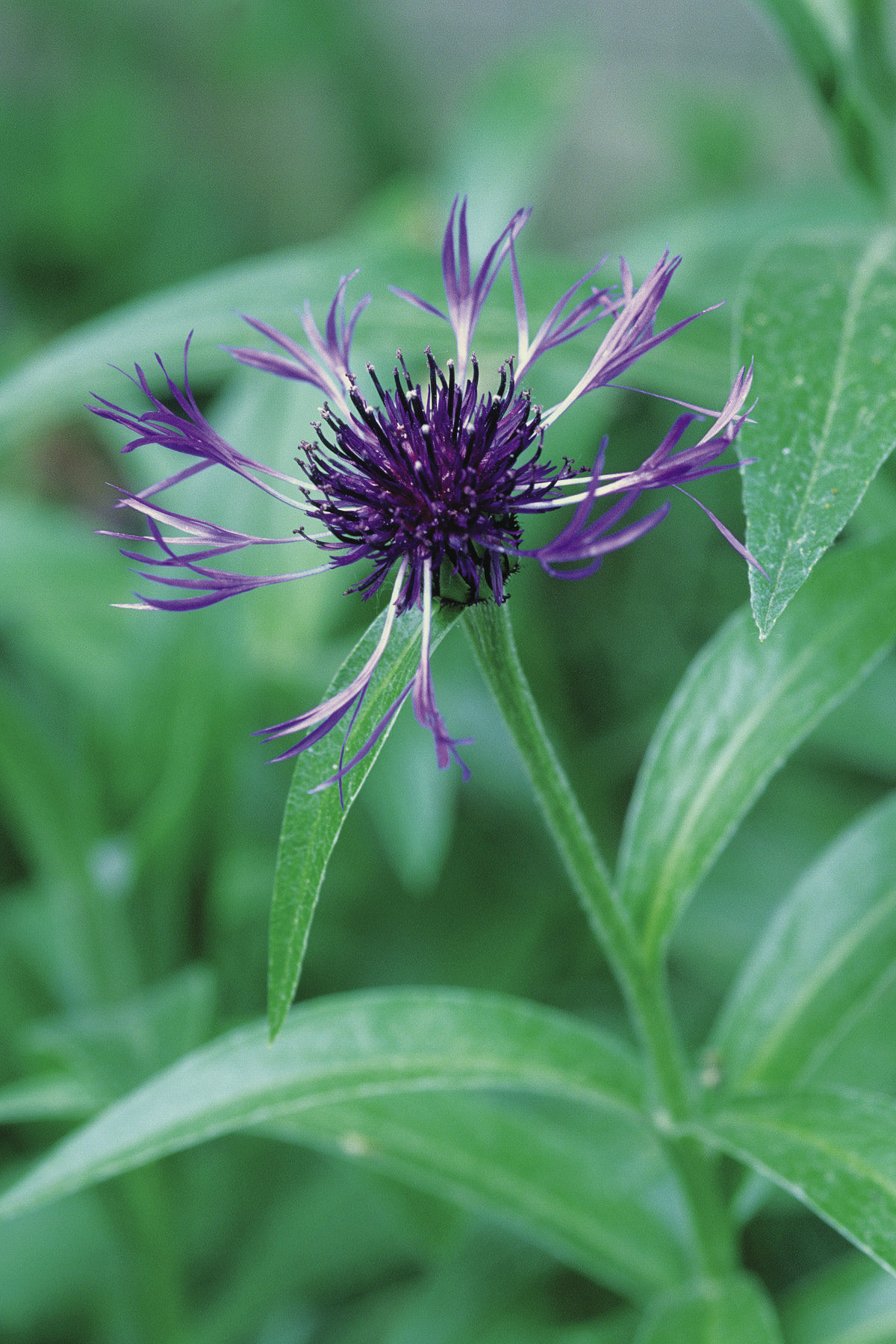
| I could not have a garden without this gets-along-with-everybody plant. I love mountain bluet’s little pineapple-like buds, and the lacy, spidery blooms look great partnered with Black Lace™ elderberry (Sambucus nigra ‘Eva’, Zones 4–7). Because I’m never afraid to make big cuts, my mountain bluet blooms most of the summer. I don’t just deadhead it: I cut it to the ground whenever it looks tired, and it happily pops back up days later. It’s tough, too. I water this plant as often as I watch Keeping Up with the Kardashians—which is never. The seedlings look quite weedy, so proceed with caution when thinning.
Zones: 3–9 Size: 18 inches tall and 2 feet wide Conditions: Full sun; well-drained soil |
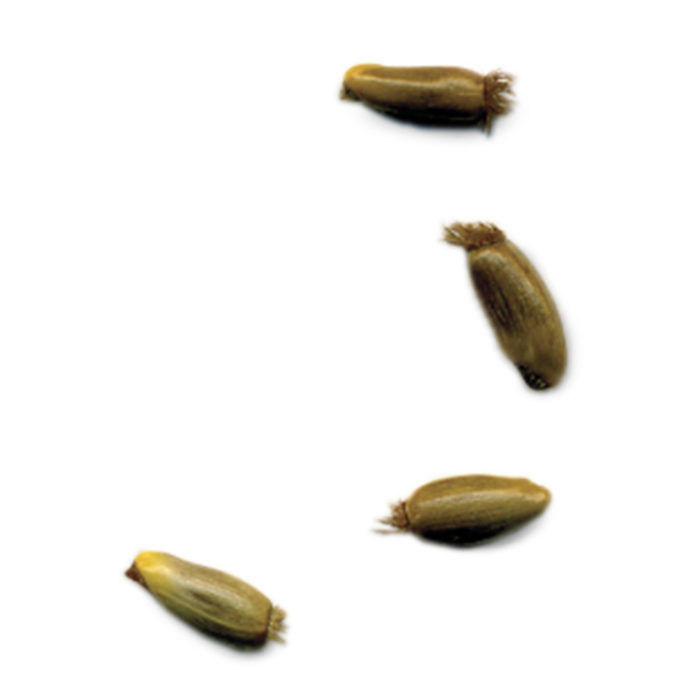 |
Chocolate daisy starts the morning off right
Name: Berlandiera lyrata
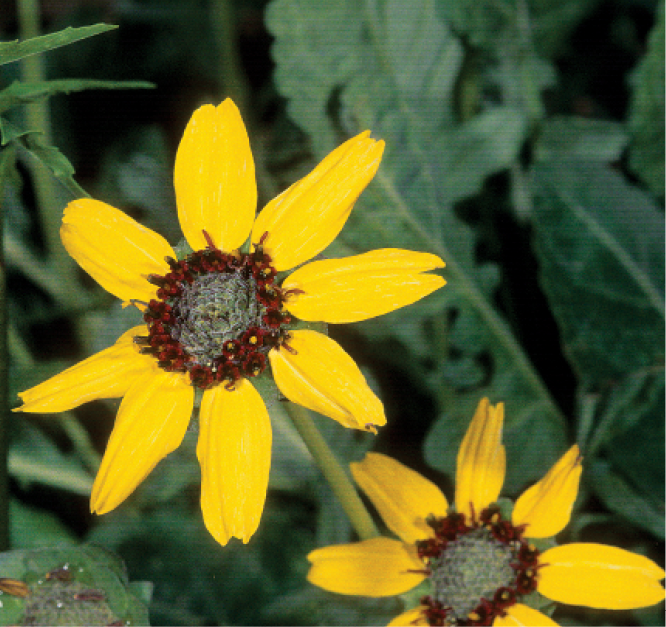
| Who can resist a chocolate-scented daisy? Deer, apparently. Being deer resistant is just one of chocolate daisy’s many charms. This long-blooming perennial measures in at less than 2 feet tall, so go ahead and put it near a well-traveled path so that you can smell it as you pass by. The scent is strongest in the morning, so set your alarm clock. It looks slightly angry, with its jagged, gray-green foliage, but its golden flowers look great planted with ‘Purple Emperor’ sedum (Sedum ‘Purple Emperor’, Zones 3–9). See that ugly, floppy thing growing over there? That’s a chocolate daisy seedling. They get better with age.
Zones: 7–9 Size: 8 to 24 inches tall and wide Conditions: Full sun; fertile, well-drained soil |
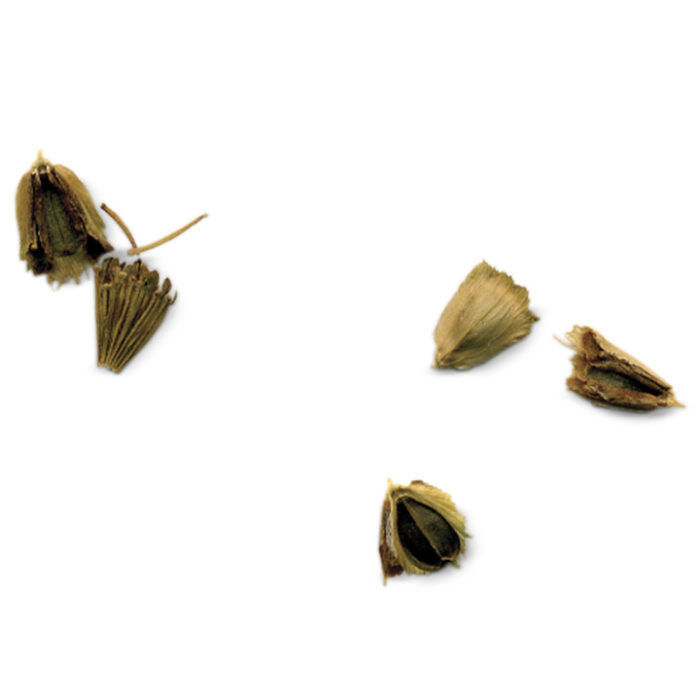 |
Small globe thistle is wickedly gorgeous
Name: Echinops ritro
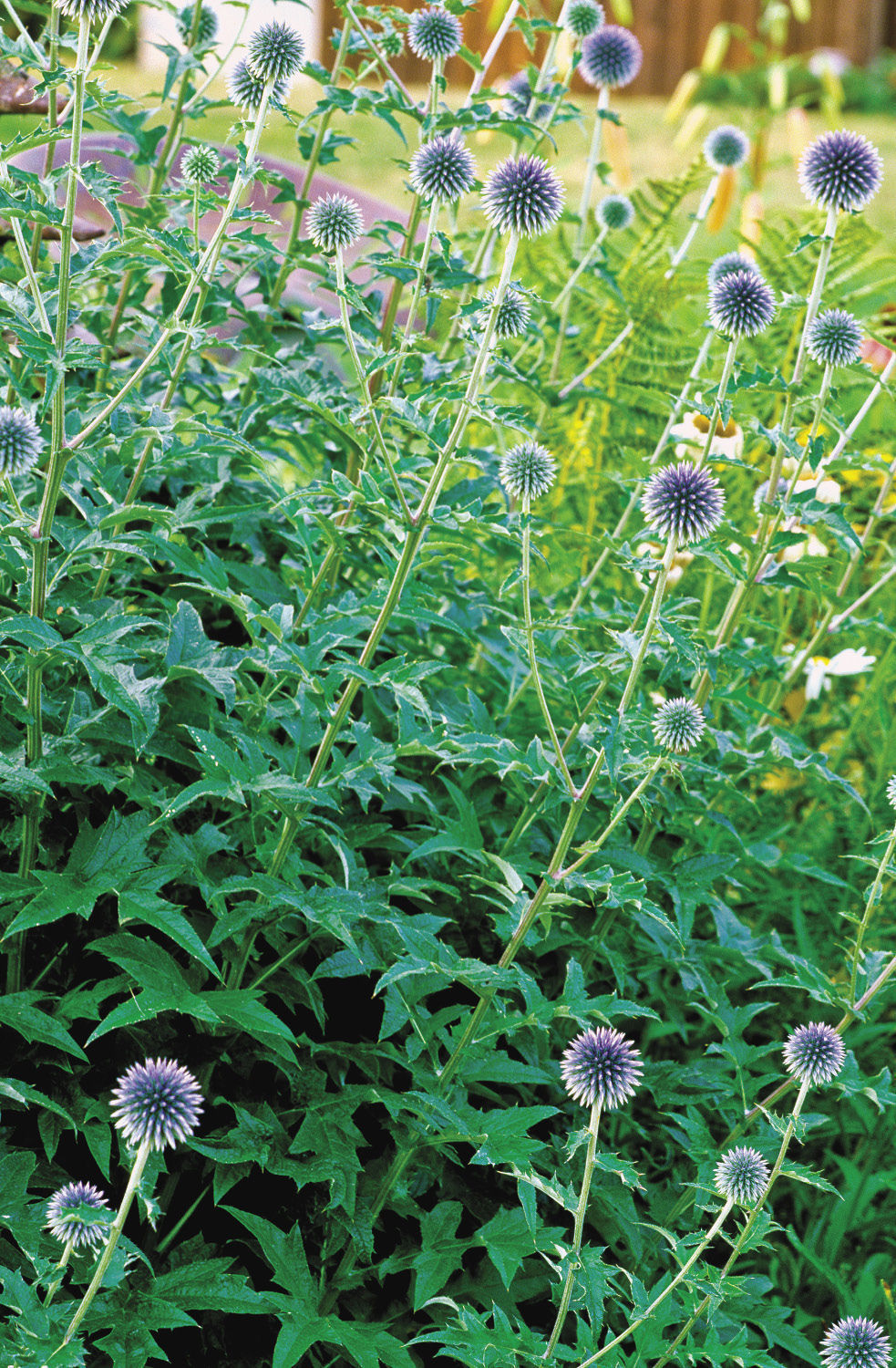
| Bees, butterflies, and birds love this garden punk, but rabbits and deer don’t care for it. I adore its wicked, spiky, silvery leaves and its perfectly round, extraterrestrial, icy blue flowers. It will grow well in average soil and does well in a drought situation. The young seedlings are difficult to identify as they are quite weedy looking, but when they begin to get their true leaves, they are easy to spot. Small globe thistle is a great companion to salsa-colored daylilies (Hemerocallis cvs., Zones 3–10).
Zones: 3–9 Size: 2 feet tall and 18 inches wide Conditions: Full sun to partial shade; lean to average, well-drained soil |
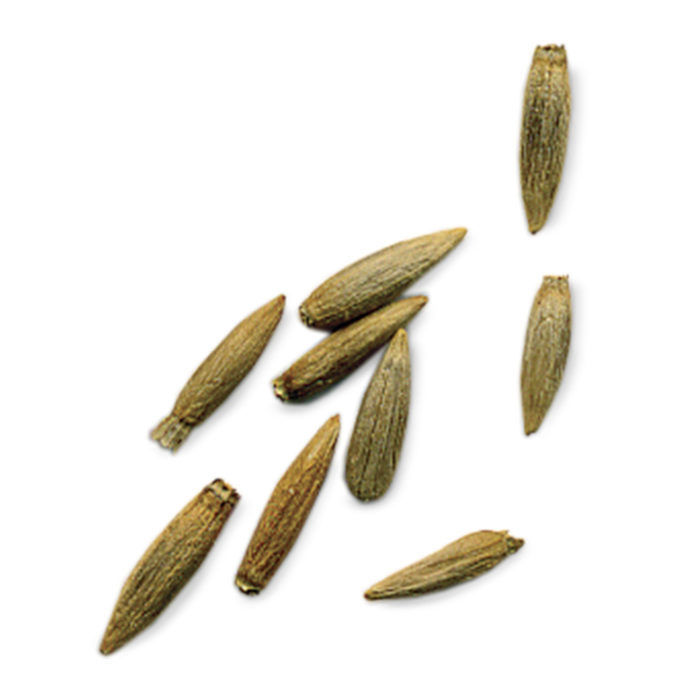 |
Tip
There’s a fine line between a happy-go-lucky self-sower and a big, mean thug
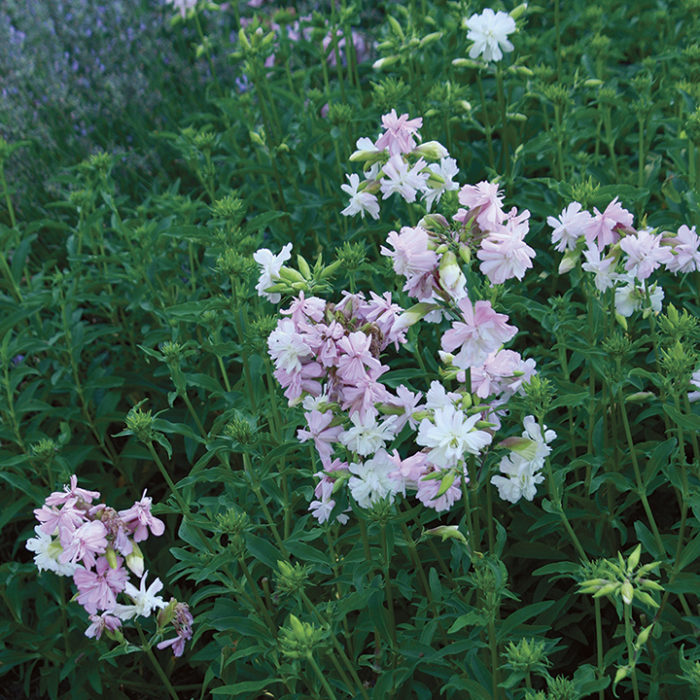
|
|
|
I like to think of self-sowing perennials as the extroverts of the garden: If your yard was a party, they would be the ultimate minglers. Plant them once, forget the deadheading, and look forward to their unbridled multiplication. There are, however, self-sowers and then there are thugs. Plants like dame’s rocket (Hesperis matronalis, Zones 4–9), bouncing bet (Saponaria officinalis, Zones 3–9), and common valerian (Valeriana officinalis, Zones 4–9) shouldn’t be grown or should be taken on as a responsibility, like a child or a Saint Bernard puppy. Some plants are worse than thugs; they are invasive and illegal, and you shouldn’t grow them. The usual suspects are purple loosestrife (Lythrum salicaria, Zones 4–9) and giant reed (Phragmites australis, Zones 3–10). If it grows in a ditch, why would you want it? Always check with your local extension service or consult a respected online list of invasive plants before accepting any self-sown gifts from gardening friends.
Finessing Your Self-Sown Garden
If you’re gunning for something a little less formal and you enjoy surprises, self-sowers are where the fun is. If they’re done right, they are the garden equivalent of that sexy, tousled, “I just rolled out of bed” look. If they’re done wrong, it will look like your house has been vacant for several years. Here are some things to consider when working with these free spirits in your garden.
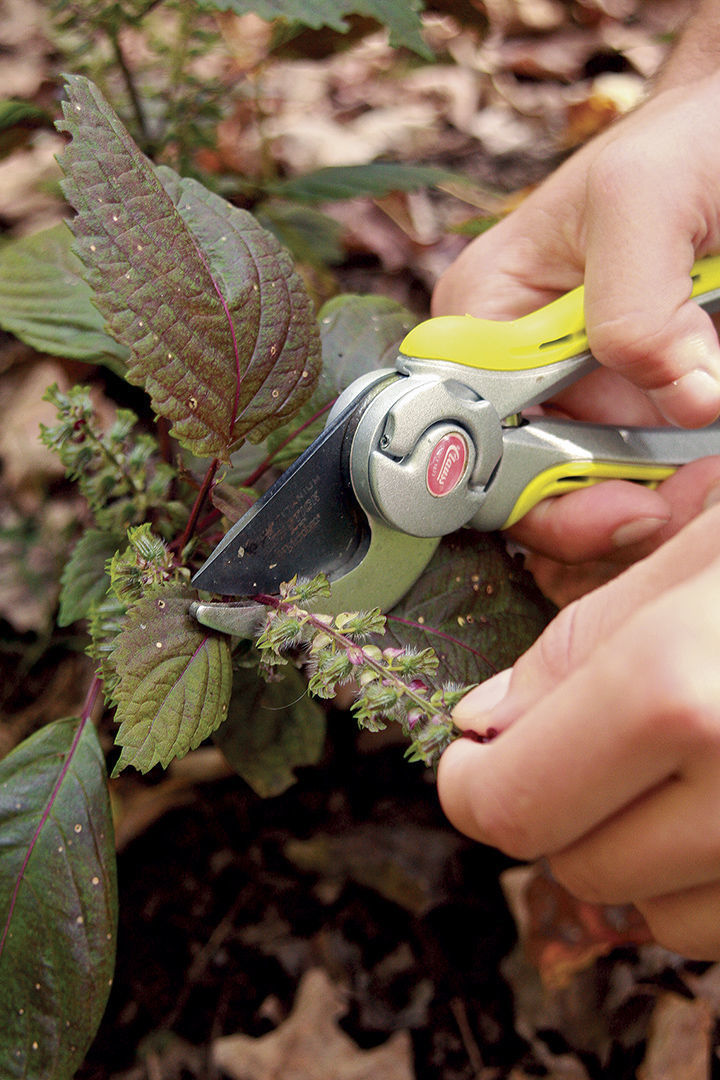
Make a self-sower happy, and it will spread
Even if a plant has a reputation for being particularly bounteous, it might not thrive where it’s planted. It might not spread beyond the mama plant for years and years. Then when you move it 3 feet to the right, it goes wild like it’s on spring break. It’s all about getting it into the right place and happy enough to reproduce. It’s a good lesson in who is really in charge in the garden—and it isn’t you.
Take it easy on the deadheading
I’m a compulsive deadheader. Like vacuuming a dirty carpet, I find it satisfying to deadhead an entire garden. It can be difficult for me to restrain myself, even if I’m positive I want to add to the plant family. If you deadhead, you get more blooms, but if you don’t deadhead, you get more plants. This is the hardest part of letting nature take its course. Sometimes you just have to bite your knuckle and back slowly away from the Felcos.
Get to know your seedlings
Think you might mistake your self-sower’s seedlings for weeds? Why not start with the more unusually colored or textured plants on the list? With its spiky leaves and silvery color, globe thistle is a good place to start. It practically shouts, “Think twice!” before you can yank it out. Although its young leaves are rounded, wait a little longer and its spikes will soon emerge.
Don’t let the party get out of control
If your self-sower is happy, it will more than likely spread five million seeds, which will turn into five million seedlings next spring. You’ll have to thin those puppies out. It hurts, but it must be done. Make sure you thin out enough seedlings so that each of the ones you’ve let survive will have enough room to reach its mature width.
Amanda Thomsen is a landscaper in Chicago.
Photos: Michelle Gervais; Bill Johnson; Nancy J. Ondra; Jerry Pavia
Sources
The following mail-order seed sellers offer the widest variety of the self-sowing perennials featured:
Diane’s Flower Seeds, 1380 N. Hwy 89, Ogden, UT 84404; www.dianeseeds.com
J. L. Hudson, Seedsman, PO Box 337, La Honda, CA 94020; www.jlhudsonseeds.com
Park Seed Co., Greenwood, S.C.; 800-845-3369; www.parkseed.com
Terroir Seeds, Chino Valley, Ariz.; 888-878-5247; www.underwoodgardens.com





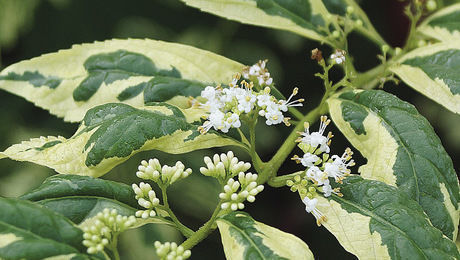
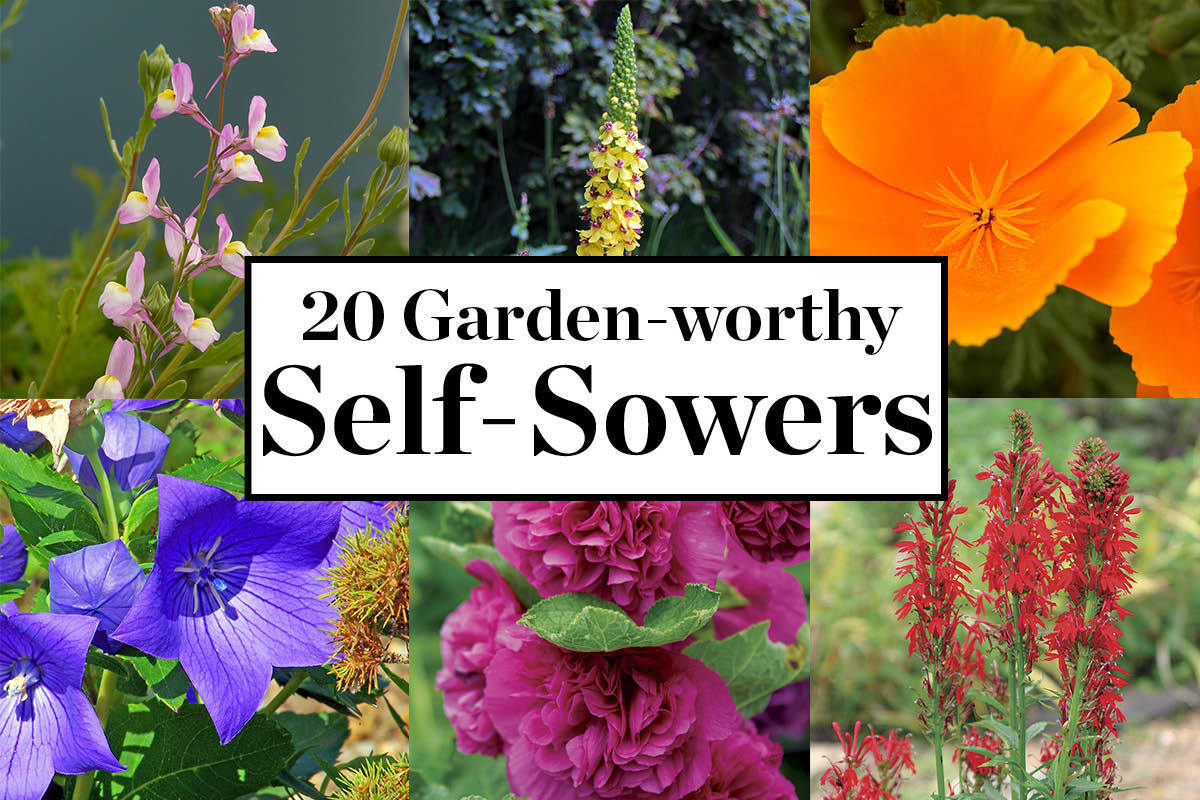
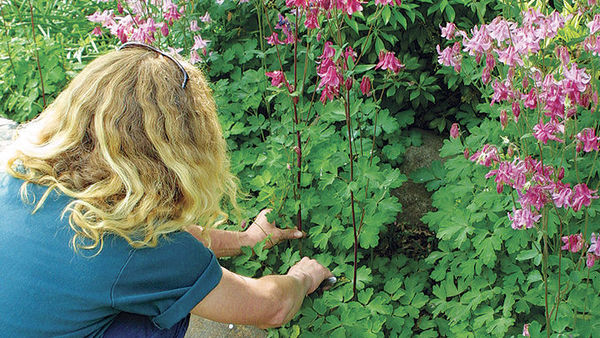
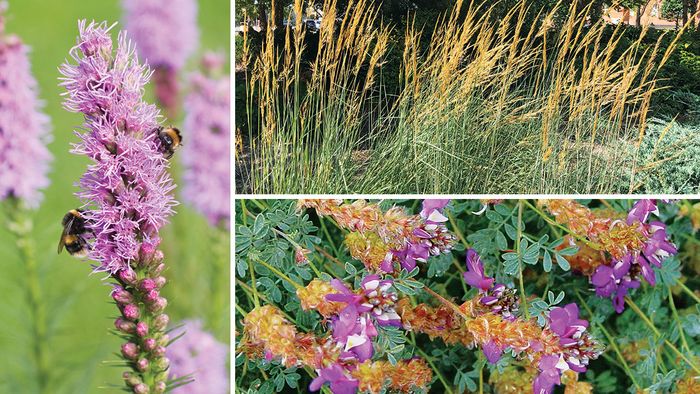

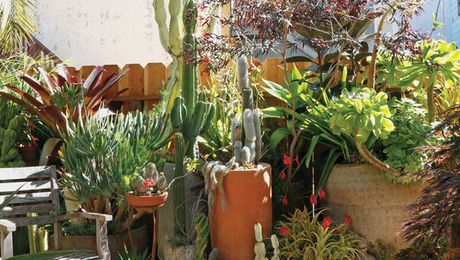









Comments
Log in or create an account to post a comment.
Sign up Log in